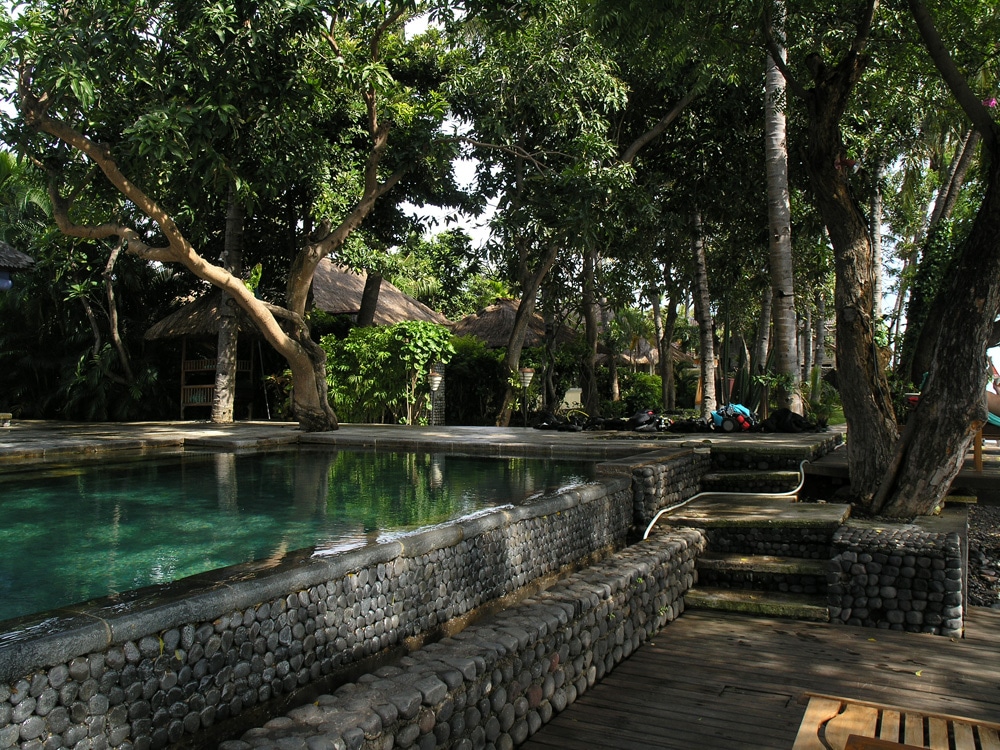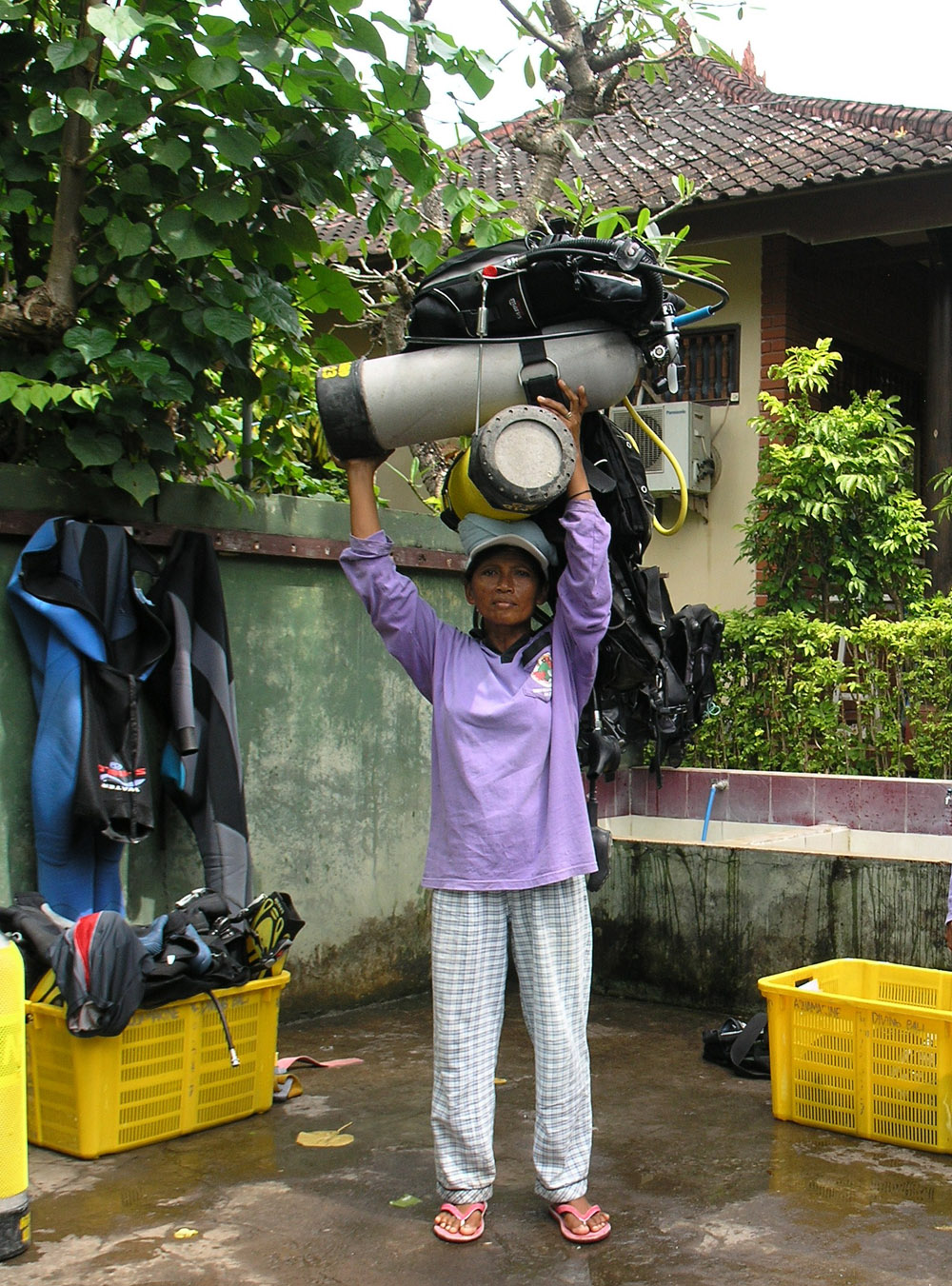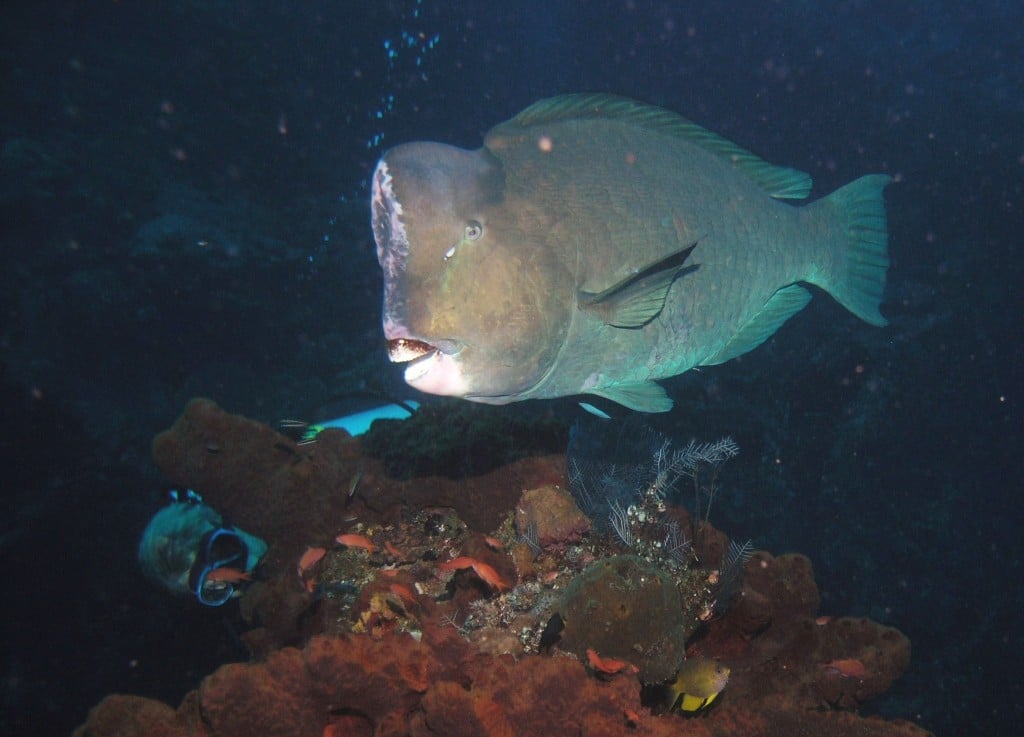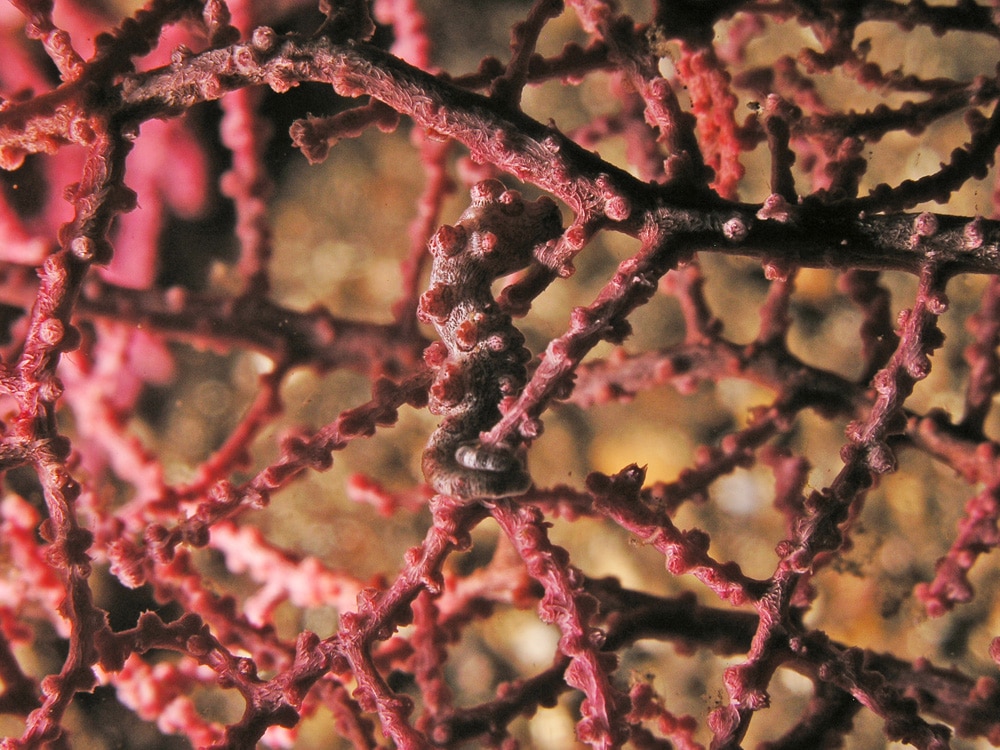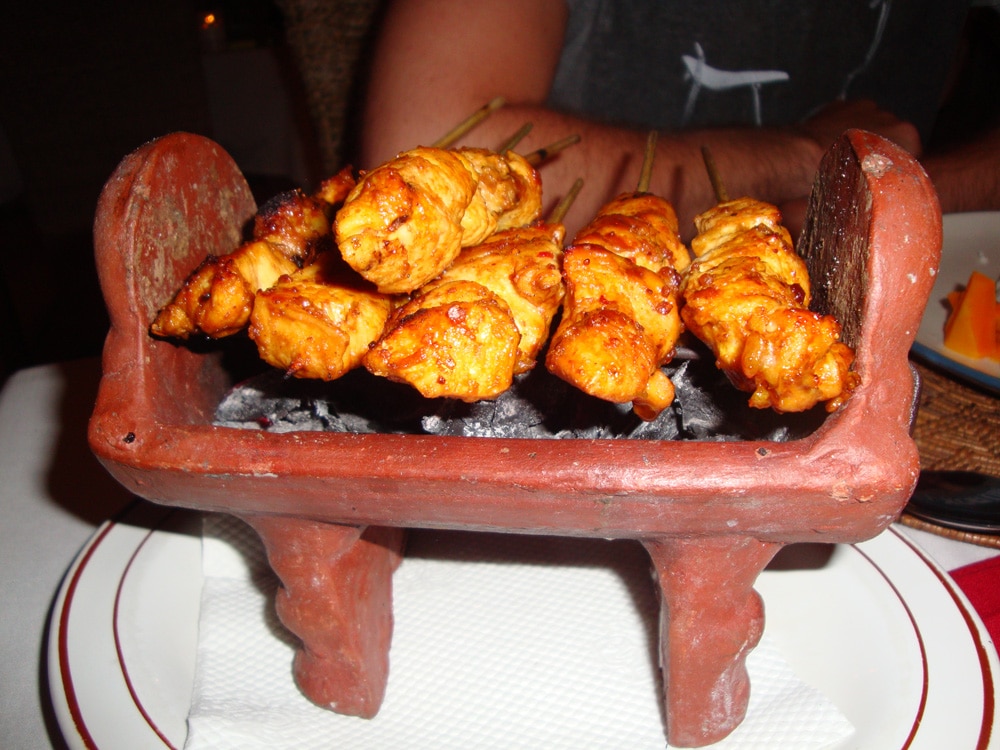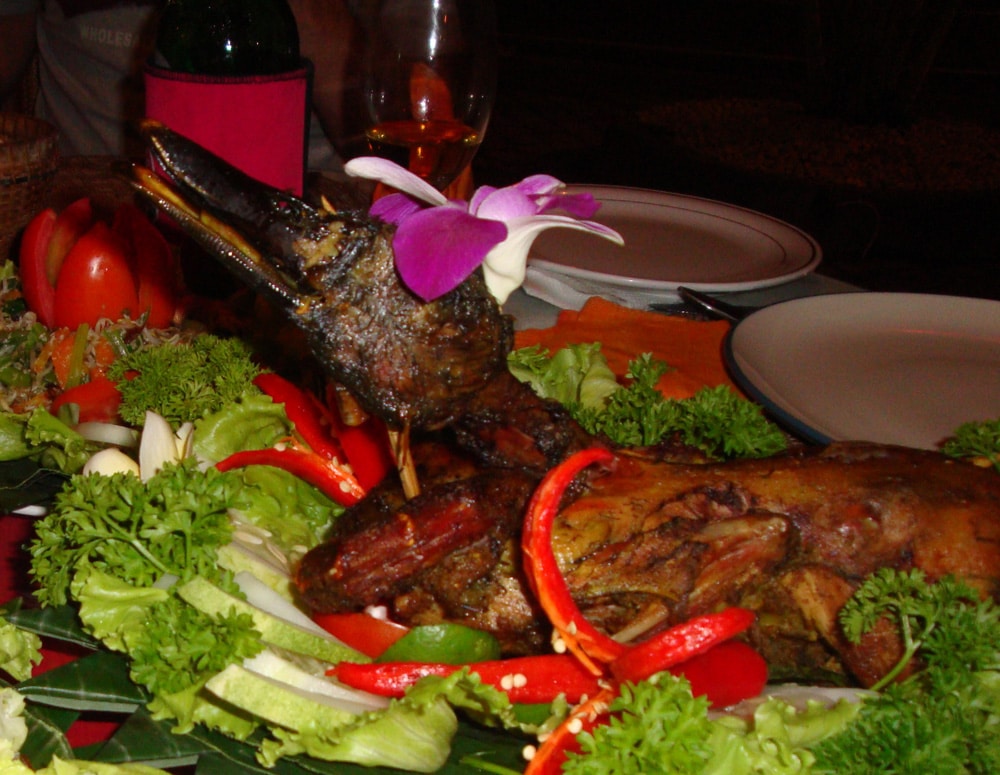News
Tulamben, Bali: USAT Liberty, Bumpheads and Bargibanti
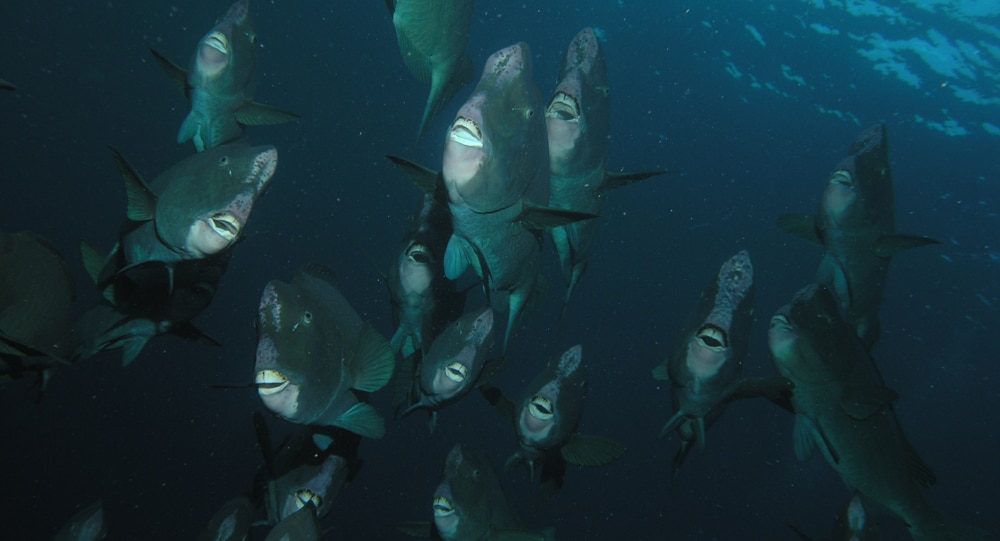
The smell of stale pee hung like a miasma in the still early morning air over the entry point to the USAT Liberty Wreck in Tulamben. It was still dark at 5.45am when we crept out of our beautifully cool veranda villa in the Mimpi Boutique Hotel Resort for our eagerly anticipated Bump Head Parrot fish encounter. We walked along the sea wall that protects the beach front resorts from the ravages of the ocean, crunching over the black stone volcanic rubble in our sandals as the sky lightened and the sea began to glow.
Tulamben is a small resort village in the East Coast of Bali, nestled against the towering Mt Agung, one of Bali’s three active volcanoes. It depends almost entirely on divers for its income who come to explore the wreck of the USAT Liberty, a deliberately beached WW2 ship that was landlocked for 20 years until 1963 when the volcano erupted, killing over a thousand people and finally sinking the ship. It now lies in a depth varying from just 6m down to 28m of water, wedged against the undersea slope.
With natural disaster always lurking in the background, and an active volcano to propitiate, the Balinese practice a very active form of animist Hinduism in their daily lives. They surround themselves with well tended gardens and natural beauty. Even the most humble dwelling often has an exquisite pot or planting on the pavement, and almost every family has a temple, or sacred place. Daily offerings are made to the gods of earth, wind, water and fire. It is almost as though the Balinese are afraid their environment will suddenly disappear, so they make everything beautiful while they can, asking help from their gods to keep their world safe.
There are divers swarming over the wreck from 7am when the porters arrive to carry the tanks to the ocean side, until 10pm when the last night divers surface. Incredibly, where every dive entry point we visited had gear washing facilities, ablutions and loos, this one with the most diver traffic has only a few bamboo platforms to kit up on, hence the stench of pee. All the gear is carried from the resorts on the heads of the staunch Balinese women porters.
Ages range from 24 to 50 years old, and most of the women are married with children. They move in a circuit, from kit-up and ablution area with full kits to entry point returning with empty cylinders. They are paid by the dive Operators through the Dive Guides and most have worked for the 11 years since the system’s inception.
We met Parman, our personal dive guide, at the restaurant rendezvous and he was on his cell to a friend with a motorcycle to organise for our gear to be transported the 200m to the entry point, as it was too early for the porters. We strapped on our weight belts, picked up our fins and wearing our Rockies over our booties we stumbled across the stones and boulders to the entry point. After 30min, no gear, the sun was showing and the dive boats had arrived, depositing 20 divers onto the wreck. By 6:30am it was clearly too late for the parrot fish encounter, but the gear arrived and we kitted up anyway.
The Bump Heads sleep in the wreck and we had seen one on our night dive the previous evening, sleeping under an overhang. They leave at sunrise to disperse across the reef, grazing on the coral and trying to convert the black volcanic silt to white coral sand with their droppings. A single Bumphead consumes 5 tonnes of coral in a year. You rarely find them in the wreck after sunrise. Surprisingly Parman finned away from the Liberty. We soon saw why. As we reached the 11m coral line, 43 Bumphead Parrot fish arrived for breakfast. Like a bovine herd, they hung beside us, benignly sleepy-eyed, the little ones pushing and shoving at each other while the gigantic herd bull tried to maintain order. He had an enormous bump, so big there was room for a tenacious remora, which clung optimistically to the edge of it.
Side on they are huge, but they are almost two dimensional, as they are very narrow creatures. As young fish they are a drab grey, but as they get older and bigger, their colour lightens to an exquisite turquoise blue with rich blue fin outlines. When the dominant male in an area dies, the largest female changes her sex and gains the stature and ponderous gravitas of an elder statesman, taking over the role of herd bull. There can be only one male in any area.
We headed back to the Liberty and plunged straight down to 34m, where Parman expected to find the exquisite minute pink pygmy seahorse. At this depth our bottom time was limited, so we had 8 minutes to find him. As the deco warnings on our computers began to flash Parman’s rattle sounded, and there he was. Minutely exquisite, clinging tenaciously to his Gorgonian Fan, we saw the Pink Pygmy Seahorse, (Hipocampus Bargibanti) and then to top off a perfect dive, the Dragon Shrimp ((Phyllognatha ceratophthalmus).
We ascended through the wreck, passing stunning hard and soft corals, Catfaced Rock Cod, dozens of unfamiliar butterfly fishes, two relaxed Regal Angelfish and a huge Malabar rock cod. There were several beautiful Oriental Sweet lips relaxing on the sand against a fallen boom, with hungry goatfish burrowing in the sand around them. A patch of garden eels waved in the slight current as we ascended, and to complete a perfect dive, a huge school of kingfish circled us overhead, hoping we would stir up a meal for them at the 3m mark.
We trudged back for breakfast through an oregano field filled with grazing goats, and were stunned by the ancient wisdom of a nation that had the foresight to pre-season its meat. Every meal we had in Bali was deliciously seasoned, elegantly served by exquisite Balinese hostesses and the most expensive dish, pre-ordered Bali Roast Goose was around £2.50 per person, for 3 courses.
Words: Jill Holloway
Images: David Holloway
Copyright: Ocean Spirit www.osdiving.com
Gear News
Introducing the TR-80, IR-50 and CS-30 Regulators from DYNAMICNORD

Whether you are a beginner or a professional diver – with the three new main regulators from DYNAMICNORD, everyone will find their favourite regulator. They all look super stylish.
Excellent performance with the TR-80
Quality and performance are the be-all and end-all for regulators. It is not for nothing that the TR stands for Tec Reg. The innovative design of the TR-80 guarantees absolute reliability – even in ice-cold waters.

Perfect breathing effort at 0.8 J/l / certified for diving in waters below 10 degrees / structural design made of solid brass for best cold protection / membrane-compensated design with dry seal of the first stage / reduced exhalation effort thanks to optimized exhalation membrane and bubble deflector / adjustable Venturi (dive/predive) and adjustment knob for individual inhalation comfort / innovative design of the front cover prevents free-flow in strong currents or when diving with scooters / design made of sandblasted brass, matt chrome finish / 2 HP and 4 LP outlets / mouthpiece made of high-quality, anti-allergic silicone for maximum comfort.


Amazing underwater adventures with the IR-50
The IR-50 is the top regulator for advanced and experienced divers. Natural breathing is the essence of this regulator.

Ideal breathing effort at 0.8 J/l /certified for diving in waters below 10 degrees / compensated membrane / adjustable venturi (dive/predive) and adjustment knob for individual inhalation comfort/ outlet valve and deflector for minimum exhalation effort and reduction of bubbles on the face / design made of sandblasted brass, matt chrome finish / 2 HP and 4 NP outlets / mouthpiece made of high-quality, anti-allergic silicone for maximum comfort.


The Workhorse – our CS-30
For diving centres and diving beginners – the workhorse stands for strong construction, reliability and robustness. Perfect for your training.

Optimal breathing effort at 0.8 J/l /recommended for diving in waters above 10 degrees / non-compensated piston / adjustable venturi (dive/predive) / outlet valve and deflector for minimum exhalation effort and reduction of bubbles on the face / design made of sandblasted brass, matt chrome finish / 1 HP and 3 NP outlets / mouthpiece made of high-quality, anti-allergic silicone for maximum comfort.


Octopus OP-30
The OP-30 is the ideal addition to all DYNAMICNORD regulators. It is identical in construction to the CS-30.

The TR-80, IR-50, CS-30 (DIN & INT) regulators and the Octopus OP-30 are available from DYNAMICNORD dealers and in the online store.
DYNAMICNORD – Your Outdoor Companion.
Marine Life & Conservation
Paul Watson Released as Denmark Blocks Japan’s Extradition Bid

Renowned anti-whaling activist Paul Watson has been released from custody in Greenland after spending five months in detention. Denmark’s Justice Ministry rejected Japan’s request for his extradition, citing insufficient guarantees that his time already served in custody would be credited against any potential sentence.
The 74-year-old Canadian-American was arrested on July 21 in Nuuk, Greenland’s capital, when his ship docked to refuel. His arrest was based on a 2012 Japanese warrant related to a 2010 encounter in Antarctic waters. Japan alleged Watson obstructed operations and caused damage to a whaling research ship during efforts to disrupt illegal whaling. Watson has consistently denied these claims, maintaining his commitment to marine conservation.
Denmark, which oversees extradition matters for Greenland, concluded that while the legal conditions for extradition were met, the lack of assurances from Japan regarding time-served credit made extradition untenable.
In a video shared by his foundation, Watson expressed gratitude and relief, saying, “After five months, it’s good to be out… and good to know they’re not sending me to Japan.” He added that the most difficult part of his time in custody was being separated from his two young sons.
Watson is a pioneering figure in marine conservation, known for founding the Captain Paul Watson Foundation in 2022 after decades of activism with the Sea Shepherd Conservation Society. His bold efforts to defend marine life have earned him widespread support, including from celebrities and conservationists. His work has also been featured in the acclaimed reality TV series Whale Wars.
Watson’s lawyer, Jonas Christoffersen, praised the decision, stating, “We are happy and relieved that Paul Watson is now free.” He added that Watson is eager to reunite with his family and continue his vital work.
The arrest occurred while Watson’s vessel, the M/Y John Paul DeJoria, was en route to the North Pacific with a team of 26 volunteers to intercept a Japanese whaling ship. His foundation described the arrest as politically motivated and emphasized that Watson’s actions were focused on ending illegal whaling practices.
Japan resumed commercial whaling in 2019 after leaving the International Whaling Commission, asserting that whale meat is a cultural tradition. Conservationists, however, continue to challenge these practices, highlighting their impact on marine ecosystems.
Despite the challenges, Watson remains steadfast in his mission to protect marine life and bring attention to whaling practices. His dedication to ocean conservation has made him a globally respected advocate for the environment.
-

 News2 months ago
News2 months agoIconic SS United States to become the World’s Largest Artificial Reef
-

 News3 months ago
News3 months agoBook Review – 52 Assignments: Underwater Photography
-

 Gear News3 months ago
Gear News3 months agoDYNAMICNORD – New German diving brand enters the British market
-

 News3 months ago
News3 months agoExploring Cenote El Pit: A Diver’s Dream
-

 Gear News3 months ago
Gear News3 months agoTry BARE drysuits (and maybe even win one!) this Friday with Sea & Sea at North West Dive Fest
-

 Marine Life & Conservation3 months ago
Marine Life & Conservation3 months agoBook Review: Coral Triangle Cameos
-

 Blogs2 months ago
Blogs2 months agoDive the Egyptian Red Sea this Autumn with Regaldive
-

 News3 months ago
News3 months ago2024 Ocean Art Underwater Photo Competition Announced



